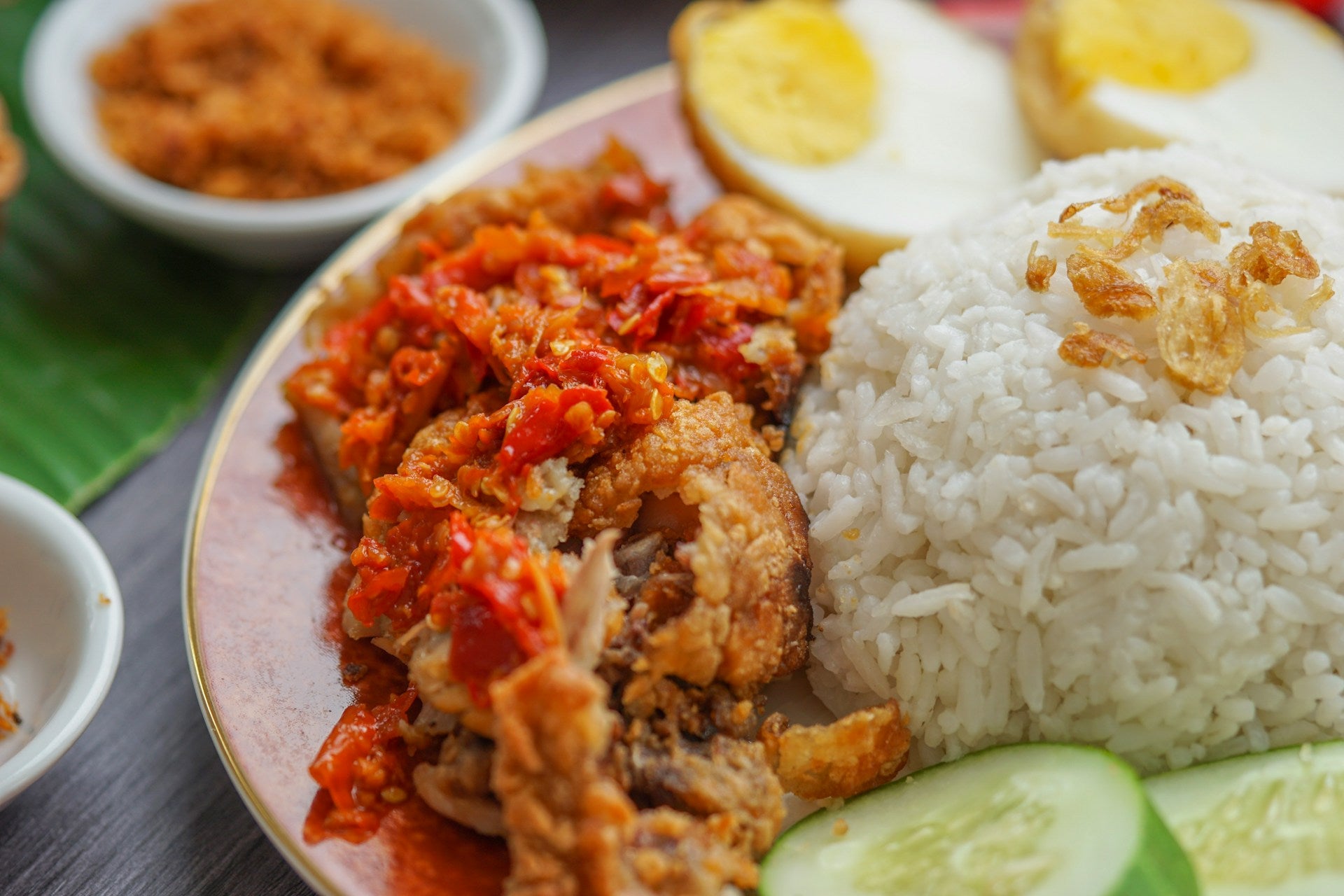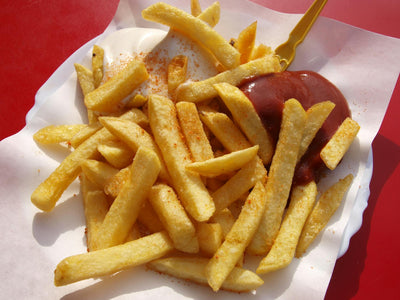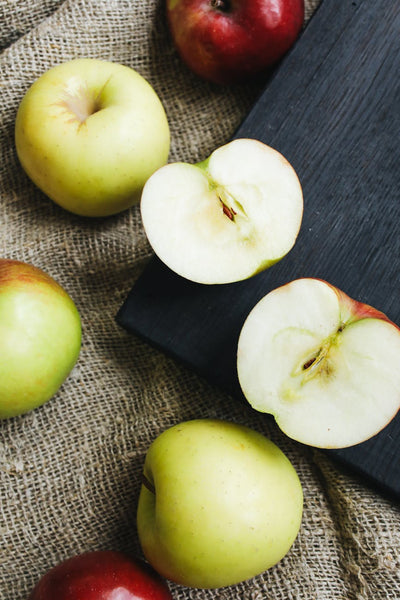Importance of Proper Storage for Rice
Understanding the Need for Storing Rice Correctly
Storing rice correctly is essential for maintaining its quality, freshness, and nutritional value. Rice, whether raw or cooked, is prone to bacterial growth, especially Bacillus cereus, which can cause food poisoning. Proper storage slows down the growth of bacteria and other contaminants, ensuring that your rice remains safe to eat for a longer period.
Furthermore, correct storage practices help prevent the rice from absorbing odors from other foods in the refrigerator, which can affect its taste. It also helps in maintaining the right moisture level, preventing the rice from drying out or becoming too moist, which could lead to spoilage.
Benefits of Extending the Shelf Life of Rice
By extending the shelf life of rice, you are not just ensuring a safe and pleasant eating experience but also reducing food waste and saving money. Additionally, having properly stored rice on hand can be a convenience, particularly for those who lead busy lifestyles and rely on meal prepping for the week ahead.
Proper storage of rice also offers flexibility in meal planning, as it allows you to cook rice in bulk and use it as needed for various dishes throughout the week. This can be a time-saver for families, entertaining, or for anyone who appreciates having a versatile staple ready at a moment's notice.
To maximize the shelf life of rice in your fridge, consider exploring different refrigerator and freezer options that provide optimal temperature and humidity control. Whether you're looking for a side by side refrigerator or a top freezer fridge, choosing the right appliance can make a significant difference in food preservation. For those who favor convenience, bottom freezer fridges can be a smart choice, while counter depth refrigerators offer a sleek look without sacrificing storage space.
For detailed guidelines on how long you can store rice in the fridge while maintaining its quality, visit our article on unlocking the secret of rice's shelf life in the fridge.
Choosing the Right Container
Selecting the Appropriate Storage Container
When you're looking to extend the shelf life of rice, selecting the appropriate storage container is a critical step. Containers that are airtight are ideal because they keep out moisture and contaminants, which can spoil the rice. You should opt for containers that come with a tight-sealing lid. Glass containers are often recommended for their non-porous nature, preventing the absorption of odors and stains. Alternatively, BPA-free plastic containers can be a practical and lightweight option.
When choosing a container, consider the amount of rice you typically store and select one that can accommodate the quantity without leaving too much empty space. Excess air in the container can lead to oxidation, which can affect the quality of the rice.
Below is a table with suggested container sizes based on the amount of cooked rice:
| Cooked Rice Quantity | Suggested Container Size |
|---|---|
| 1 cup | 1.5 cups |
| 2 cups | 1 quart |
| 4 cups | 2 quarts |
| 6 cups | 3 quarts |
Factors to Consider When Choosing a Container
Several factors should be taken into account when selecting the right container for storing rice in the fridge:
- Size: The container should be large enough to hold your cooked rice without cramming, but not so large that there is a lot of excess air space.
- Material: Glass and BPA-free plastic are the most common materials. Glass is durable and stain-resistant, while plastic is lightweight and often more affordable.
- Seal: Look for containers with airtight seals to keep moisture and air out.
- Shape: Rectangular or square containers are more space-efficient for storage in the fridge, especially if you have a side by side refrigerator or are using a compact refrigerator with a top freezer.
- Stackability: Containers that stack securely on top of one another can save space, which is particularly beneficial if you have a bottom freezer fridge or need to maximize space in a counter depth fridge.
- Ease of Cleaning: Choose containers that are dishwasher-safe to ensure easy cleaning.
- Microwave-Safety: If you plan on reheating rice directly in the container, ensure it's microwave-safe.
By considering these factors, you can select the right container that will help maintain the freshness and quality of your rice. Proper storage not only extends the shelf life of rice but also ensures that it remains safe to eat. For more insights on storage and refrigeration, you can explore our article on smart storage solutions for side by side refrigerators and discover the best practices for beef storage to inform your overall kitchen storage approach.
Preparing Rice for Refrigeration
Before you can store cooked rice in your refrigerator, ensuring it's prepared correctly is essential for safety and quality. Properly cooking and cooling rice can significantly extend its shelf life.
Properly Cooking Rice for Refrigeration
When preparing rice with the intention of refrigerating it, you should cook it as you normally would, but with a few considerations in mind:
- Rinse the rice thoroughly to remove excess starch, which can cause it to become gummy during storage.
- Cook the rice until it's just done – avoid overcooking as it may lead to a mushy texture after reheating.
- Use a ratio of water to rice that's appropriate for the type of rice you're cooking. This typically ranges from 1:1.5 to 1:2 (rice to water).
By following these steps, you ensure that the rice is in the best condition for refrigeration, which not only maintains the quality but also helps prevent bacterial growth. For more on smart storage solutions, consider exploring articles like smart storage solution side by side refrigerators minus ice makers.
Cooling and Handling Cooked Rice Safely
It's crucial to cool rice quickly and safely before refrigeration to prevent the growth of harmful bacteria, such as Bacillus cereus. Follow these guidelines to cool and handle your cooked rice safely:
- Spread the cooked rice out on a clean, shallow tray or dish to allow for quick and even cooling. Avoid leaving rice at room temperature for more than an hour.
- Once the rice has cooled down (which should take no more than 90 minutes), transfer it to a clean, airtight container. Make sure the container is not too deep, as this can slow down the cooling process in the refrigerator.
- Seal the container tightly to prevent the rice from absorbing odors and flavors from other foods in the fridge.
By adhering to these practices, you can help extend the shelf life of your rice and maintain its freshness and flavor. For additional guidelines on keeping food fresh, such as beef storage mastery maximizing freshness in your fridge, visit our in-depth articles.
When stored properly, cooked rice can last in the refrigerator for 4 to 6 days. For specific shelf life details, take a look at our article on unlock the secret how long should you store rice in the fridge. Remember, the key to extending the shelf life of your rice lies in the initial preparation and prompt cooling before refrigeration.
Storing Rice in the Fridge
Proper storage of cooked rice in the fridge can help you extend its shelf life and maintain its quality. Here are best practices and tips for keeping your rice fresh and flavorful.
Best Practices for Storing Cooked Rice in the Fridge
When you store cooked rice in the refrigerator, you're taking a crucial step to ensure its longevity and edibility. To maximize the shelf life, consider the following:
- Prompt Storage: Rice should be refrigerated within two hours of cooking to reduce the risk of bacteria growth.
- Airtight Containers: Use airtight containers to prevent moisture and other contaminants from affecting the rice.
- Portioning: Divide the rice into smaller portions for quicker cooling and easier reheating later.
- Labeling: Mark the containers with the date of storage to keep track of how long the rice has been in the fridge.
Here's a simple table outlining the recommended storage times:
| Storage Description | Duration |
|---|---|
| Room Temperature (before refrigeration) | Within 2 hours of cooking |
| Refrigeration | 3-5 days |
| Freezing | 1 month (for best quality) |
For additional insights on smart storage solutions, read our article on smart storage solution side by side refrigerators minus ice makers.
Tips for Maintaining Freshness and Flavor
To keep your refrigerated rice tasting as good as when it was first cooked, follow these tips:
- Cooling: Allow the rice to cool to room temperature before placing it in the fridge. Spreading it on a tray can speed up the process.
- Moisture Management: To prevent the rice from drying out, you can drape a damp paper towel over it before reheating.
- Avoid Contamination: Ensure that the rice is not stored near raw foods or strong-smelling items that could affect its taste.
Incorporating these practices into your routine can help you enjoy delicious rice days after cooking. If you're interested in exploring different refrigerator configurations that can aid in your food storage management, like maximizing space or improving organization, consider reading about the perfect fit sleek and spacious bottom freezer refrigerators.
By following these best practices and tips, you can confidently store your rice in the fridge, knowing that you're taking the necessary steps to preserve its quality. Not only does this reduce food waste, but it also provides you with a versatile base for a variety of meals throughout the week. For more on how long you should store rice in the fridge, check out our in-depth guide unlock the secret how long should you store rice in the fridge.
Reheating Refrigerated Rice
When it comes to reheating your stored rice, safety, and preserving the dish's quality are paramount. Here's how to ensure your refrigerated rice remains delicious and safe to consume.
Safely Reheating Stored Rice
Before you reheat rice that has been stored in the fridge, there are safety considerations to keep in mind to avoid foodborne illness. It is crucial to store rice in the fridge within two hours of cooking to prevent bacterial growth. When reheating, the rice should reach an internal temperature of 165°F to ensure it is safe to eat. Use a food thermometer to check the temperature, and make sure the rice is steaming hot throughout.
It's also important to only reheat rice once. Repeated heating can increase the risk of foodborne illness. So, separate your portions before refrigerating if you plan on multiple servings. For more information on rice storage safety, you might find unlock the secret how long should you store rice in the fridge helpful.
Methods for Reheating Refrigerated Rice
There are several effective methods for reheating your refrigerated rice while maintaining its texture and flavor. Here are some recommended techniques:
-
Microwave: Place the rice in a microwave-safe container, sprinkle some water to add moisture, and cover it with a lid or microwave-safe plastic wrap to trap the steam. Heat on high until it's thoroughly warmed, usually 1-2 minutes per cup of rice.
-
Stove: Transfer the rice into a saucepan and sprinkle some water over it. Cover the saucepan and warm the rice over low heat, stirring occasionally until it's heated through.
-
Steamer: If you have a steamer, you can steam refrigerated rice to bring back its fluffy texture. Just place the rice in the steamer and let it heat until it's thoroughly warm.
-
Oven: Preheat the oven to 300°F. Spread the rice in an even layer in a shallow baking dish, sprinkle some water, and cover it with foil. Heat it for around 20 minutes, or until it's heated through.
Here's a table summarizing the reheating methods and times:
| Reheating Method | Amount of Rice | Approximate Time |
|---|---|---|
| Microwave | 1 cup | 1-2 minutes |
| Stove | 1 cup | 3-5 minutes |
| Steamer | 1 cup | 5-10 minutes |
| Oven | 1-2 cups | 20 minutes |
Remember, the key to successfully reheating rice lies in adding a little moisture and ensuring it's heated all the way through. For more kitchen tips and tricks, you may find our articles on smart storage solutions, like smart storage solution side by side refrigerators minus ice makers, and beef storage mastery maximizing freshness in your fridge, useful.
Whether you're reheating a small serving for yourself or a large portion for family and friends, these methods will ensure your rice is just as satisfying as when it was freshly made.
Monitoring Rice Quality
Ensuring that your stored rice remains fresh and safe to eat is crucial. Here's how to monitor the quality of your refrigerated rice and identify any signs of spoilage.
Signs of Spoilage in Stored Rice
When rice goes bad, it typically displays several indicators. Here are common signs that your stored rice may be spoiled:
- Offensive Odor: Fresh rice has a neutral aroma. If your rice emits a sour or unpleasant smell, it's a clear indication of spoilage.
- Discoloration: Any noticeable change in color, such as dark spots or unusual hues, could suggest the presence of mold or bacterial growth.
- Texture Changes: If the rice feels slimy or overly sticky, it has likely gone bad.
- Mold Growth: Visible mold growth is a definitive sign that your rice should not be consumed and must be discarded immediately.
Regular checks are necessary to prevent the consumption of spoiled rice. It's advised to look for these signs before reheating and consuming your refrigerated rice.
How to Determine if Rice is Still Safe to Eat
To ascertain whether your refrigerated rice is still safe to eat, follow these simple steps:
- Visual Inspection: Check for mold or discoloration.
- Smell Test: Sniff the rice for any off or sour odors.
- Touch Test: Feel the rice with your fingers to detect any abnormal sliminess or stickiness.
If your rice passes these tests without showing any of the above signs, it's generally safe to eat. Remember to reheat the rice to an internal temperature of 165°F (74°C) to kill any potential bacteria.
For additional information on storing various food items to extend their shelf life, consider reading about maximizing storage with side by side refrigerators or how to preserve the freshness of beef in your fridge. If you're curious about the longevity of other common foods in your refrigerator, check out our guides on the shelf life of onions or how long cooked shrimp can be refrigerated.
For those interested in optimizing their kitchen storage, explore our articles ranging from top freezer fridge buying guides to the convenience of bottom freezer fridges. And if you're considering upgrading your refrigeration system, don't miss our recommendations for counter depth side by side refrigerators.
Lastly, to unlock the secret to the question of how long you should store rice in the fridge, our dedicated article will provide you with expert tips and advice.
Using Refrigerated Rice
Refrigerating rice after cooking is a smart move to extend its shelf life and prevent waste. Once you've stored your rice properly, it's time to get creative with it. Here are some inventive ways to give your chilled rice a new lease on life, as well as some recipes to inspire your next meal.
Creative Ways to Utilize Refrigerated Rice
When you have refrigerated rice on hand, you open up a world of culinary possibilities:
- Fried Rice: Chilled rice is actually the ideal base for making fried rice because it's drier than fresh rice, which helps prevent the dish from becoming mushy.
- Rice Salads: Cool rice can be tossed with a variety of vegetables, proteins, and dressings to create a refreshing rice salad, perfect for quick lunches.
- Stuffed Peppers: Use your refrigerated rice as a filling for bell peppers or tomatoes, mixed with spices, herbs, and other fillings like cheese or ground meat.
- Rice Cakes or Patties: Mix rice with egg, breadcrumbs, and your choice of seasonings, then pan-fry them into crispy rice cakes.
- Rice Soups: Add rice to soups to make them heartier. It's a great way to bulk up a simple vegetable or chicken soup.
Recipes and Dishes Using Stored Rice
Here are some simple recipes that make excellent use of your stored rice:
- Classic Chicken Fried Rice: Combine your refrigerated rice with sautéed chicken, peas, carrots, onions, and a touch of soy sauce for a quick and tasty meal.
- Mediterranean Rice Salad: Mix rice with chopped cucumbers, tomatoes, olives, feta cheese, and a lemon-olive oil dressing for a Mediterranean twist.
- Cheesy Rice-Stuffed Tomatoes: Hollow out some tomatoes and stuff them with a mixture of rice, grated cheese, herbs, and spices, then bake until the tomatoes are tender.
- Vegetable Rice Soup: Start with a base of sautéed onions and garlic, add broth and a mix of your favorite vegetables, and then stir in rice for a comforting soup.
Remember, when using refrigerated rice, always ensure that it has been stored properly and has not exceeded its shelf life. If you're unsure about how long rice can be stored, consult our resource on unlocking the secret of how long you should store rice in the fridge.
By using your refrigerated rice in these creative and delicious ways, you can reduce food waste while enjoying versatile and satisfying meals. Whether you're in a rush or planning a special dinner, these ideas can help you transform leftover rice into something extraordinary.
Get Your Upgrade or New Addition at Fridge.com
Shop the world's best brands at Fridge.com.
Whether you're searching for your perfect fridge, freezer, wine fridge, beer fridge, ice maker, or kegerator, we have what you need.
We also have tons of awesome articles about kitchen stuff and home news. Enhance your home, garage, backyard, patio, and office with the coolest essentials. With every necessary type of residential refrigerator or freezer in our collection, we've got you covered.
Elevate your game and shop now at Fridge.com!






